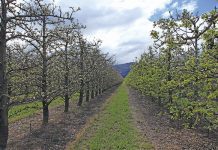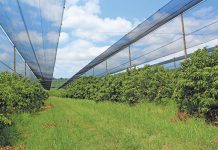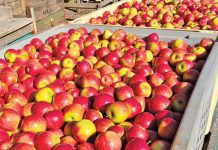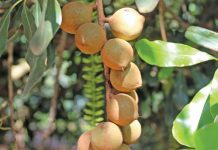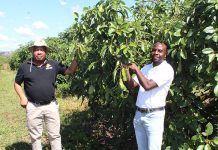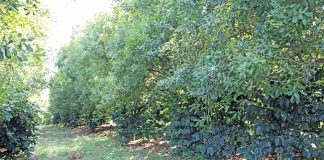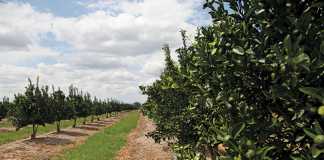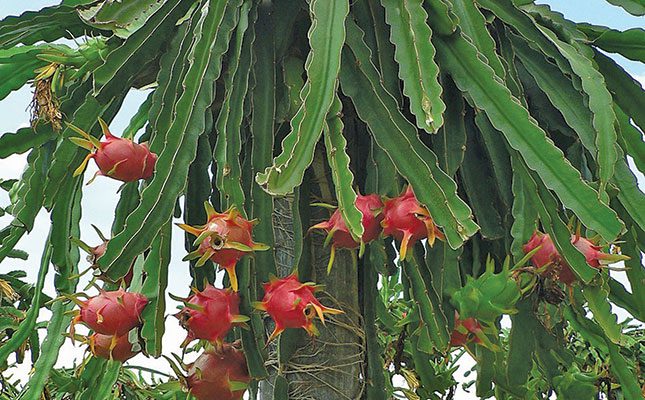
Photo: Wikimedia Commons
Dragon fruit, also known as pitaya, is native to southern Mexico, Guatemala, Costa Rica and El Salvador. It grows on several different species of cactus. Despite its origins in Southern America, it is most widely produced and consumed in Asia, with China the world’s biggest consumer.
Vietnam is currently the world’s biggest producer and exporter of the fruit. Here, it is called ‘thanh long’, which translates to ‘dragon’s eyes’, and is believed to be the origin of its common English name.
‘Dragon fruit’ has been used since the early 1960s to describe the fruit, likely due to its leather-like skin and prominent spikes. In some regions, the fruit may be known as a strawberry pear. The fruit generally weighs between 150g and 600g. The ideal fruit is unblemished and overripe.
Varieties
Stenocereus fruit (sour dragon fruit) is a variety that is commonly eaten in the arid regions of the Americas. They are reportedly sourer and refreshing, with juicier flesh and a stronger taste, than the Selenicereus variety.
READ Cactus pear: one crop, three profitable markets
Selenicereus undatus (white-fleshed dragon fruit) is perhaps the most well-known variety, and has pink-skinned fruit and white flesh. Selenicereus costaricensis (red-fleshed dragon fruit) is red-skinned with red flesh. Selenicereus megalanthus (yellow dragon fruit) has yellow skin and white flesh.
Cultivation
Dragon fruit seeds grow well in compost, and can even be grown as potted indoor plants. The seeds prefer a shallower planting, with the cactus germinating after around 11 days. The cactus of the dragon fruit is a climbing plant.
Once the cactus reaches around 4,5kg, it may begin to bear fruit. Plants can take up to 60 months to come into full commercial production, at which stage trees can yield between 20t and 30t.
Flowers tend to bloom overnight and wilt by the following evening. The cactus relies on bats and moths for pollination. Cross-pollination with a second, genetically distinct plant of the same species generally increases fruit set and quality. This limits the capability of home growers to produce the fruit. However, the plants can flower between three and six times per year depending on growing conditions.
Like other cacti, if a healthy piece of the stem is broken off, it may take root in the soil and become its own plant.
Selenicereus has adapted to live in dry tropical climates with a moderate amount of rain. In numerous regions, it has escaped cultivation to become a weed and is classified as an invasive weed in some countries.
Pests and diseases
Stems and fruit are susceptible to several diseases caused by fungi, bacteria, a nematode, and a virus. Overwatering or excessive rainfall can cause the flowers to drop and fruit to rot. The bacterium Xanthomonas campestris causes the stems to rot. Dothiorella fungi can cause brown spots on the fruit. Other fungi known to infect pitaya include Botryosphaeria dothidea, Colletotrichum gloeosporioides and Bipolaris cactivora.
Pitayas are common in international trade and so pests are constantly moved with the fruits. Pitayas are less hospitable to larval development, retarding full size.
Food and seed oils
The fruit’s texture is sometimes likened to that of the kiwifruit because of its black, crunchy seeds. The seed oil contains the fatty acids linoleic acid and linolenic acid. Dragon fruit is used to flavour and colour juices and alcoholic beverages. The flowers can be eaten or steeped as tea.
The fatty acid compositions of the seed oils of S. costaricensis, syn. Hylocereus costaricensis (red-fleshed pitaya) and S. undatus, syn. H. undatus (white-fleshed pitaya) are similar: myristic acid (negligible), palmitic acid (17%), stearic acid (5%), palmitoleic acid (about 1%), oleic acid (22%), cis-vaccenic acid (3%), linoleic acid (50%), and alpha-Linolenic acid (1%).
South Africa
In South Africa, dragon fruit production is on the increase, with produce generally exported to Northern Hemisphere countries in Europe. The warm climate in South Africa is ideal for dragon fruit production, as the fruit favours moderate temperatures of around 21°C to 29°C.
However, it also requires high rainfall of between 650mm and 1 200mm annually. The fruit is also sensitive to too much sunlight and frost, and is likely to grow best in regions in South Africa where bananas, avocados and macadamias nuts are produced.
READ Time for SA farmers to cash in on the succulent boom
Some of these regions include the Midlands in KwaZulu-Natal, Mbombela in Mpumalanga, and Tzaneen in Limpopo. Dragon fruit can also be produced in some parts of the Western and Eastern Cape.
Currently, South Africa produces around 100t of dragon fruit per year on around 50ha. As new plantings come into production, however, production is expected to increase, with new market opportunities opening up for local farmers.
Dragon fruit is harvested in South Africa from November to March. Dragon fruit from the Western Cape and Mpumalanga can produce into May and June, but the season of inland South Africa concludes in April.


